Photo
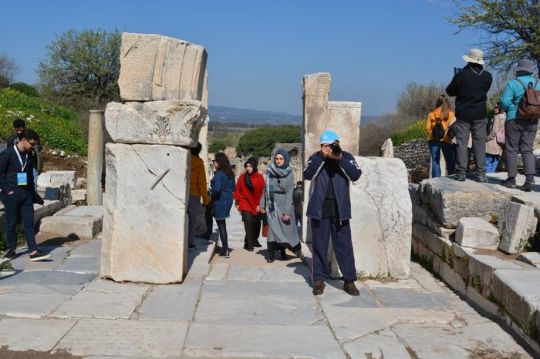
Sultan Murad IV - Reign and Legacy
Repairing and Enriching Sacred Sites
The Tombs of Imam-i Azam and Sheikh Abdulkadir Geylani, revered figures in Islam, underwent extensive repairs supervised by Sheikhulislam. They were adorned with opulent gold and silver lamps along with jewelry, enhancing their grandeur and significance. Additionally, Mustafa Pasha, the trusted guard of Sultan Murad IV, displayed profound devotion by sending a diamond to adorn the Prophet’s Tomb in Medina (Ravza-i Mutaharra).
International Diplomacy and Remarkable Gifts
Sultan Murad IV’s reign saw prosperity that extended its influence to the farthest reaches of the east. An envoy from India arrived in Musul bearing lavish gifts while the Sultan was en route from Baghdad to Istanbul. Among these gifts was an exquisitely decorated belt valued at fifty thousand piasters and a unique helmet crafted from elephant’s ear and rhinoceros hide, reputed to be impervious to bullets and swords. In a display of his prowess, Sultan Murad IV pierced the helmet effortlessly with his spear, filling it with gold florins before returning it to the Indian Sovereign’s palace.
Restoring Order and Stability
Sultan Murad IV’s rule was marked by his unwavering authority, which he wielded to maintain order within the empire, rescuing it from the brink of collapse. However, the toll of such authoritarianism took a toll on him, leaving him exhausted. Upon his brother Sultan Ibrahim’s ascension to the throne, order had already been established, aided by a treasury brimming with resources.
The Reformative Era Under Sultan Ibrahim
During Sultan Ibrahim’s reign, characterized by historians as a period of folly, Kara Mustafa Pasha, a seasoned vizier, served as Grand Vizier. Under his leadership Istanbul Walking Tour, the treasury remained stable, intoxication was abolished, and administrative reforms were implemented, including city registrations and the first census. He ensured timely payments for Janissaries and Spahis, with salaries fixed at eighty aspers of pure silver. Moreover, he introduced the practice of allocating clothing aid annually from the treasury. Despite his remarkable achievements, Kara Mustafa Pasha met an untimely end through execution in 1053.
Legacy and Conclusion
Sultan Murad IV’s reign left an indelible mark on Ottoman history, marked by prosperity, diplomatic prowess, and authoritative governance. His legacy endured through the reforms initiated under Sultan Ibrahim, underscoring the significance of stable governance and administrative efficiency in sustaining an empire.
0 notes
Photo

The Bulgarian Way of Life
The Bulgarians, much like the Russian peasantry, uphold traditional patriarchal values.
Family Bonds
In Bulgarian households, multiple generations often reside under one roof, with fathers, married sons, and their descendants cohabiting until the grandfather passes away. With each new marriage, an additional room is constructed onto the family home, accommodating the growing family unit. This communal living arrangement fosters a sense of unity, with all members paying homage and deference to the family patriarch.
Population Estimations
Estimating the population of Bulgarian villages requires a nuanced approach. While the number of houses may suggest a certain figure, it’s essential to consider the average household size. According to Edip Effendi’s report, the village in question purportedly had only 1,400 inhabitants—a claim deemed highly dubious by Mr. Schuyler. Through examination of tax records, Schuyler discovered 1,421 able-bodied men subject to military exemption tax. In most European countries, this figure would signify a population of approximately 15,000. However, due to unique circumstances in Bulgaria, the actual population likely ranges between 8,000 to 10,000 individuals Tour Packages Balkan.
Misconceptions and Realities
Dispelling Myths
There exists a prevalent misconception regarding the Bulgarians’ level of civilization. Often dismissed as primitive savages akin to American Indians, this stereotype fails to capture the true essence of Bulgarian society.
Education and Enlightenment
Contrary to popular belief, Bulgarian villages boast thriving educational institutions. Despite challenges posed by Turkish authorities, these schools, supported by voluntary taxation, provide free education to children of all backgrounds. Nearly every Bulgarian child receives instruction in reading and writing, with literacy rates comparable to those of England and France.
Challenging Perceptions
It is imperative to challenge outdated perceptions of Bulgarian society. The widespread dissemination of false narratives undermines the rich cultural heritage and progressive strides made by the Bulgarian people. By acknowledging their educational achievements and societal advancements, we can dispel the myth of Bulgarian “savagery” and recognize the nation’s rightful place among civilized societies.
0 notes
Photo

The Bulgarian Way of Life
The Bulgarians, much like the Russian peasantry, uphold traditional patriarchal values.
Family Bonds
In Bulgarian households, multiple generations often reside under one roof, with fathers, married sons, and their descendants cohabiting until the grandfather passes away. With each new marriage, an additional room is constructed onto the family home, accommodating the growing family unit. This communal living arrangement fosters a sense of unity, with all members paying homage and deference to the family patriarch.
Population Estimations
Estimating the population of Bulgarian villages requires a nuanced approach. While the number of houses may suggest a certain figure, it’s essential to consider the average household size. According to Edip Effendi’s report, the village in question purportedly had only 1,400 inhabitants—a claim deemed highly dubious by Mr. Schuyler. Through examination of tax records, Schuyler discovered 1,421 able-bodied men subject to military exemption tax. In most European countries, this figure would signify a population of approximately 15,000. However, due to unique circumstances in Bulgaria, the actual population likely ranges between 8,000 to 10,000 individuals Tour Packages Balkan.
Misconceptions and Realities
Dispelling Myths
There exists a prevalent misconception regarding the Bulgarians’ level of civilization. Often dismissed as primitive savages akin to American Indians, this stereotype fails to capture the true essence of Bulgarian society.
Education and Enlightenment
Contrary to popular belief, Bulgarian villages boast thriving educational institutions. Despite challenges posed by Turkish authorities, these schools, supported by voluntary taxation, provide free education to children of all backgrounds. Nearly every Bulgarian child receives instruction in reading and writing, with literacy rates comparable to those of England and France.
Challenging Perceptions
It is imperative to challenge outdated perceptions of Bulgarian society. The widespread dissemination of false narratives undermines the rich cultural heritage and progressive strides made by the Bulgarian people. By acknowledging their educational achievements and societal advancements, we can dispel the myth of Bulgarian “savagery” and recognize the nation’s rightful place among civilized societies.
0 notes
Photo

The Bulgarian Way of Life
The Bulgarians, much like the Russian peasantry, uphold traditional patriarchal values.
Family Bonds
In Bulgarian households, multiple generations often reside under one roof, with fathers, married sons, and their descendants cohabiting until the grandfather passes away. With each new marriage, an additional room is constructed onto the family home, accommodating the growing family unit. This communal living arrangement fosters a sense of unity, with all members paying homage and deference to the family patriarch.
Population Estimations
Estimating the population of Bulgarian villages requires a nuanced approach. While the number of houses may suggest a certain figure, it’s essential to consider the average household size. According to Edip Effendi’s report, the village in question purportedly had only 1,400 inhabitants—a claim deemed highly dubious by Mr. Schuyler. Through examination of tax records, Schuyler discovered 1,421 able-bodied men subject to military exemption tax. In most European countries, this figure would signify a population of approximately 15,000. However, due to unique circumstances in Bulgaria, the actual population likely ranges between 8,000 to 10,000 individuals Tour Packages Balkan.
Misconceptions and Realities
Dispelling Myths
There exists a prevalent misconception regarding the Bulgarians’ level of civilization. Often dismissed as primitive savages akin to American Indians, this stereotype fails to capture the true essence of Bulgarian society.
Education and Enlightenment
Contrary to popular belief, Bulgarian villages boast thriving educational institutions. Despite challenges posed by Turkish authorities, these schools, supported by voluntary taxation, provide free education to children of all backgrounds. Nearly every Bulgarian child receives instruction in reading and writing, with literacy rates comparable to those of England and France.
Challenging Perceptions
It is imperative to challenge outdated perceptions of Bulgarian society. The widespread dissemination of false narratives undermines the rich cultural heritage and progressive strides made by the Bulgarian people. By acknowledging their educational achievements and societal advancements, we can dispel the myth of Bulgarian “savagery” and recognize the nation’s rightful place among civilized societies.
0 notes
Photo

The Bulgarian Way of Life
The Bulgarians, much like the Russian peasantry, uphold traditional patriarchal values.
Family Bonds
In Bulgarian households, multiple generations often reside under one roof, with fathers, married sons, and their descendants cohabiting until the grandfather passes away. With each new marriage, an additional room is constructed onto the family home, accommodating the growing family unit. This communal living arrangement fosters a sense of unity, with all members paying homage and deference to the family patriarch.
Population Estimations
Estimating the population of Bulgarian villages requires a nuanced approach. While the number of houses may suggest a certain figure, it’s essential to consider the average household size. According to Edip Effendi’s report, the village in question purportedly had only 1,400 inhabitants—a claim deemed highly dubious by Mr. Schuyler. Through examination of tax records, Schuyler discovered 1,421 able-bodied men subject to military exemption tax. In most European countries, this figure would signify a population of approximately 15,000. However, due to unique circumstances in Bulgaria, the actual population likely ranges between 8,000 to 10,000 individuals Tour Packages Balkan.
Misconceptions and Realities
Dispelling Myths
There exists a prevalent misconception regarding the Bulgarians’ level of civilization. Often dismissed as primitive savages akin to American Indians, this stereotype fails to capture the true essence of Bulgarian society.
Education and Enlightenment
Contrary to popular belief, Bulgarian villages boast thriving educational institutions. Despite challenges posed by Turkish authorities, these schools, supported by voluntary taxation, provide free education to children of all backgrounds. Nearly every Bulgarian child receives instruction in reading and writing, with literacy rates comparable to those of England and France.
Challenging Perceptions
It is imperative to challenge outdated perceptions of Bulgarian society. The widespread dissemination of false narratives undermines the rich cultural heritage and progressive strides made by the Bulgarian people. By acknowledging their educational achievements and societal advancements, we can dispel the myth of Bulgarian “savagery” and recognize the nation’s rightful place among civilized societies.
0 notes
Photo

The Arrival of the Slavs in the Balkans
Background
The Slavs, originating from the eastern regions of the Russian steppe, arrived in the Balkan Peninsula around the 5th century. Over the next two and a half centuries, they gradually occupied the area, pushing aside the local Hellenized population, especially in Thrace and Macedonia. By the end of this period, the Slavs had settled across the entire peninsula, except for the coastal regions where the existing inhabitants relied on the military strength of Byzantium to keep the new settlers away.
Byzantine Relations with the Slavs
The Byzantine emperors did not see the Slavs as enemies. The Slavs were peaceful tribes who became farmers and herders. They were not aggressive or politically driven. Over time, the Slavic settlers were even called upon to fight alongside the Byzantines against common enemies. The Byzantine ruling court viewed the gradual settlement of Slavic farmers and herdsmen in the Balkans favorably City Tour Istanbul.
Old Bulgarians’ Arrival (Around 650 A.D.)
Around 650 A.D., a powerful group of Old Bulgarians, led by their khan Asparukh, arrived at the banks of the Danube, dividing Romania from Bulgaria. Settling in North Dobrudja, they initiated raids on Byzantine territory. The Old Bulgarians had originated from the region between the Volga River and its tributary, the Kama. Unlike the Slavs, they were more politically oriented. Over the centuries, small migrant groups of Old Bulgarians had integrated into Slavic communities. The Old Bulgarians, skilled organizers, extended their political influence over the Slavs, providing them with a name, a sense of unity, and leadership. They adopted the Slavs’ language and embraced a greater sense of democratic policy.
0 notes
Photo

The Arrival of the Slavs in the Balkans
Background
The Slavs, originating from the eastern regions of the Russian steppe, arrived in the Balkan Peninsula around the 5th century. Over the next two and a half centuries, they gradually occupied the area, pushing aside the local Hellenized population, especially in Thrace and Macedonia. By the end of this period, the Slavs had settled across the entire peninsula, except for the coastal regions where the existing inhabitants relied on the military strength of Byzantium to keep the new settlers away.
Byzantine Relations with the Slavs
The Byzantine emperors did not see the Slavs as enemies. The Slavs were peaceful tribes who became farmers and herders. They were not aggressive or politically driven. Over time, the Slavic settlers were even called upon to fight alongside the Byzantines against common enemies. The Byzantine ruling court viewed the gradual settlement of Slavic farmers and herdsmen in the Balkans favorably City Tour Istanbul.
Old Bulgarians’ Arrival (Around 650 A.D.)
Around 650 A.D., a powerful group of Old Bulgarians, led by their khan Asparukh, arrived at the banks of the Danube, dividing Romania from Bulgaria. Settling in North Dobrudja, they initiated raids on Byzantine territory. The Old Bulgarians had originated from the region between the Volga River and its tributary, the Kama. Unlike the Slavs, they were more politically oriented. Over the centuries, small migrant groups of Old Bulgarians had integrated into Slavic communities. The Old Bulgarians, skilled organizers, extended their political influence over the Slavs, providing them with a name, a sense of unity, and leadership. They adopted the Slavs’ language and embraced a greater sense of democratic policy.
0 notes
Photo
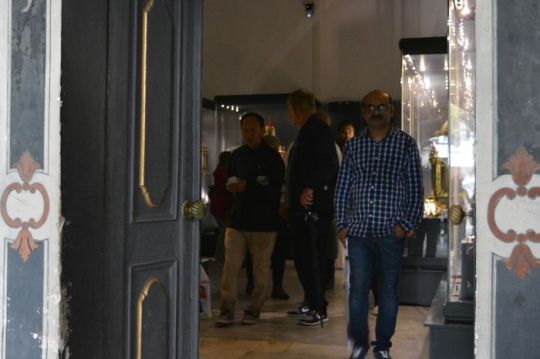
The Balkan Wars
Unraveling Aspirations and Shifting Alliances
Paving the Way for Conflict
As Bulgaria’s capital industry burgeoned, the need for trade outlets in the Aegean became apparent. Simultaneously, the people of Macedonia and Lower Thrace endured the enduring burden of Ottoman rule. In this complex landscape, a war seemed inevitable, driven by varied aspirations that momentarily converged on common goals.
War as a “Sacred Cause”
Post-insurrections and the attainment of state independence, the Bulgarian populace viewed war against Turkey as the sacred means to address the national question. This endeavor aimed to liberate compatriots in Macedonia and the Odrin region, offering a potential solution to their plight.
The Balkan Alliance Emerges
With the global powers teetering on the brink of a world war, the Triple Alliance and the Entente sought allies in the Balkans. The result was the formation of the Balkan Alliance under Russian patronage. This strategic coalition united Balkan Christian states against a still formidable Turkey and served as a tool for the Entente’s influence in the Peninsula Private Turkey Tours.
Exploiting Ottoman Weakness
Seizing the weakened state of the Ottoman Empire after its defeats in the war with Italy, the Bulgarian rulers, alongside Serbia, Greece, and later Montenegro, established the Balkan Entente in 1912. This alliance aimed to exploit the Ottoman Empire’s vulnerability.
Bulgarian-Serbian Treaty
The Bulgarian-Serbian Treaty, signed on February 29th, 1912, targeted Turkey and envisioned the division of future free Macedonia into two regions or zones. Bulgaria, assuming a pivotal role in the conflict, committed to deploying a substantial force and leading the war on the crucial Thracian front against the principal Turkish forces.
Challenges Within the Balkan Alliance
While the Balkan Alliance promised unity, it soon became evident that the union was fragile and temporary. Unresolved territorial issues created internal tensions. Bulgaria, undertaking significant responsibilities, found itself grappling with the explosive dynamics of conflicting interests within the alliance.
Prelude to Conflict
The Balkan Wars were not just battles on the Thracian front but also a complex interplay of shifting alliances, national aspirations, and geopolitical strategies. As Bulgaria assumed a central role, the stage was set for a conflict that would reshape the region’s political landscape.
0 notes
Photo

The Balkan Wars
Unraveling Aspirations and Shifting Alliances
Paving the Way for Conflict
As Bulgaria’s capital industry burgeoned, the need for trade outlets in the Aegean became apparent. Simultaneously, the people of Macedonia and Lower Thrace endured the enduring burden of Ottoman rule. In this complex landscape, a war seemed inevitable, driven by varied aspirations that momentarily converged on common goals.
War as a “Sacred Cause”
Post-insurrections and the attainment of state independence, the Bulgarian populace viewed war against Turkey as the sacred means to address the national question. This endeavor aimed to liberate compatriots in Macedonia and the Odrin region, offering a potential solution to their plight.
The Balkan Alliance Emerges
With the global powers teetering on the brink of a world war, the Triple Alliance and the Entente sought allies in the Balkans. The result was the formation of the Balkan Alliance under Russian patronage. This strategic coalition united Balkan Christian states against a still formidable Turkey and served as a tool for the Entente’s influence in the Peninsula Private Turkey Tours.
Exploiting Ottoman Weakness
Seizing the weakened state of the Ottoman Empire after its defeats in the war with Italy, the Bulgarian rulers, alongside Serbia, Greece, and later Montenegro, established the Balkan Entente in 1912. This alliance aimed to exploit the Ottoman Empire’s vulnerability.
Bulgarian-Serbian Treaty
The Bulgarian-Serbian Treaty, signed on February 29th, 1912, targeted Turkey and envisioned the division of future free Macedonia into two regions or zones. Bulgaria, assuming a pivotal role in the conflict, committed to deploying a substantial force and leading the war on the crucial Thracian front against the principal Turkish forces.
Challenges Within the Balkan Alliance
While the Balkan Alliance promised unity, it soon became evident that the union was fragile and temporary. Unresolved territorial issues created internal tensions. Bulgaria, undertaking significant responsibilities, found itself grappling with the explosive dynamics of conflicting interests within the alliance.
Prelude to Conflict
The Balkan Wars were not just battles on the Thracian front but also a complex interplay of shifting alliances, national aspirations, and geopolitical strategies. As Bulgaria assumed a central role, the stage was set for a conflict that would reshape the region’s political landscape.
0 notes
Photo
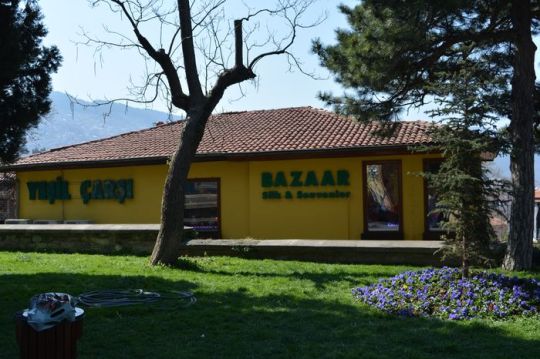
The Unveiling of Unspeakable Horrors
Women’s Descent into Despair
Confessions of Dishonour A Brave Prelude
In the shadow of unthinkable horrors, women found courage in the act of confessional narration. They stood before the world, their voices trembling yet resolute, as they uttered the word “dishonour.” But what lay ahead was a descent into a darkness far more profound and agonizing.
Beyond Dishonour The Stain of Defilement
The narratives unfold, revealing that for women subjected to the brutality of Turkish oppression, dishonour was but a prelude. A woman’s suffering extended beyond mere shame; she faced a harrowing journey of being stained, defiled, and degraded. These stories depict a descent into a nightmarish reality, where self-loathing becomes an indelible mark, and the mirror reflects a stranger tainted by the hands of cruelty.
Echoes of Despair A Mother’s Agony for Her Daughters
The women, in their heart-wrenching confessions, weren’t shedding tears for themselves alone. A more profound grief engulfed them as they recounted the atrocities inflicted upon their daughters. Innocent and tender girls of twelve and fifteen, even children Balkan Tours, became victims of the same brutalization. A mother’s agony extended beyond personal suffering to encompass the unbearable pain of witnessing the desecration of her offspring.
Silent Screams Why Share the Unbearable?
The question arises—why these women chose to come forward, to expose their deepest wounds and utter the unspeakable? It transcends the burden of personal injustice and the foul, dreadful wrongs inflicted upon them. Perhaps, it’s the spirit wounded beyond endurance, impelled by an invisible force to scream out the injustices that Heaven must hear, if not see. A feeble hope, perhaps, that someday justice will prevail, and the avenging hand of retribution will reach those responsible.
The Unheard Stories Unspeakable Horrors Left Untold
The sheer horror embedded in these narratives defies repetition. The tales of unspeakable brutality, though left untold here, serve as a testament to the depth of human suffering. In a world where such atrocities persist, the voices that dare to break the silence become beacons, exposing the need for justice, compassion, and an unwavering commitment to end the cycle of cruelty.
0 notes
Photo
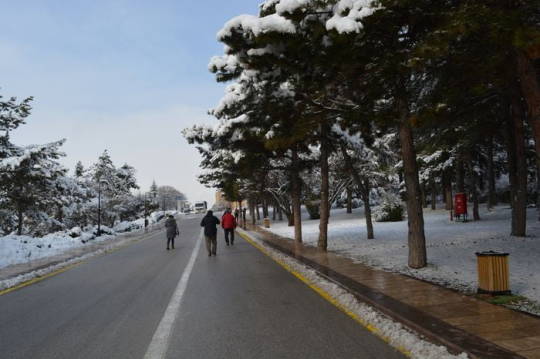
Tragedy in Perustitza
Unraveling the Brutality of the Bashi-Bazouks
In the somber chronicles of the village of Perustitza, a tale of tragedy unfolds, shedding light on the merciless actions of the notorious Bashi-Bazouks. The events that transpired during those fateful days not only left a scar on the community but also drew attention to the need for justice and accountability.
One particular incident exemplifies the ruthless nature of the Bashi-Bazouks. Among those who ventured outside the village was a Frenchman, involved in commercial activities in Philippopolis. Driven by the distressing news of unrest, he returned home in search of a fellow Frenchman who had gone missing. Unbeknownst to him, danger lurked as he encountered the Bashi-Bazouks. Fluent in Turkish, he attempted to explain his purpose to Achmet-Aga, only to find himself detained and eventually killed, presumably in a pursuit for imagined wealth.
This tragic occurrence did not go unnoticed by the French Consul, who promptly lodged a complaint. The French Government, spurred by this grievous act, likely demanded compensation for the families of the two deceased men. This incident underscores the gravity of the situation in Perustitza and unveils the murderous tendencies that fueled the actions of the Bashi-Bazouks.
Siege to the village
As the Bashi-Bazouks laid siege to the village, terrorizing its inhabitants, a grim reality unfolded. Those who lacked confidence in the benevolence of the Turks and hesitated to surrender found themselves fleeing to the fields. private tours bulgaria Their desperate escape, however, was futile as the merciless pursuers hunted them down, leaving a trail of death in their wake.
The Bashi-Bazouks, having disposed of those in their clutches, turned their attention to the abandoned homes. Pillaging with abandon, they plundered the villagers of their possessions and, with a heartless disregard, set their homes ablaze. The village, once a peaceful abode, now stood witness to the destruction wrought by the marauding forces.
Remarkably, the Bashi-Bazouks refrained from launching a direct assault on the church, opting instead to harass its occupants from a distance. Their bravery, it seemed, was reserved for confronting defenseless women and children. When faced with armed resistance, their courage waned, revealing a stark contrast in their demeanor.
For three agonizing days, the villagers endured the pillaging and burning of their homes, while the Bashi-Bazouks callously fired upon the church from a secure vantage point. The besieged villagers, relegated to the churchyard, could only watch in despair as the flames consumed the remnants of their once-thriving community.
The tragedy of Perustitza serves as a poignant reminder of the brutality that can be unleashed in times of conflict. It beckons the international community to reflect on the importance of justice and accountability, urging swift action to address the heinous acts perpetrated by the Bashi-Bazouks. In the face of such atrocities, the world must stand united to ensure that the voices of the victims are heard and that the perpetrators are held accountable for their crimes.
0 notes
Photo

TURKISH ATROCITIES IN BULGARIA
Scattered over England and the whole of Europe, MacGahan’s reports contributed to create out of the April uprising a process testing the political and moral conscience of the epoch. In that above all else consists the supreme importance of these pages stained with blood.
THE TURKISH ATROCITIES IN BULGARIA
The Bulgarian Atrocities: “Daily News” Special Inquiry.
Philippopolis, July 28.
I arrived here three days ago on a mission of investigation. Philippopolis, it may be mentioned, is the principal town in that part of Bulgaria which was the scene of the exploits of the Bashi-Bazouks, and is therefore the best or rather the only point at which trustworthy information can be obtained respecting the atrocities now exciting so much indignation in Europe. I found that Mr. Baring had already arrived and commenced the work of investigation.
American Consul- General
Mr. Schuyler, the American Consul- General, likewise arrived, partly on a similar errand, partly to inquire into the advisability of establishing a vice-consulate, or taking other measures for the protection of a few American missionary families established throughout the country. The other consuls, I find, made reports to their respective Governments some time ago, and are now engaged in collecting further information relating to the insurrection City Tour Istanbul.
It is a curious fact that while the Austrian, Greek, Russian, and French Governments all have consuls in this place, who give minute and detailed reports of everything that happens here, the English Government, which one would think equally interested in receiving prompt and correct information, should have no agent at all. There is an English consul at Adrianople, a very worthy gentleman, but his health is so shattered that he is utterly unfit for service of any kind. It is therefore scarcely astonishing that the English Government should know less of what is passing in Turkey than other Governments, and far less than well-informed newspapers.
0 notes
Photo
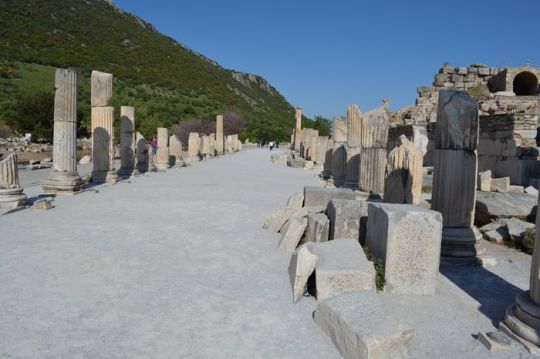
MacGahan Arrived Philippopolis
No journalist was ever more suited to such a mission as was MacGahan. He arrived in Philippopolis on fitly 23rd and immediately set about his task. On the other hand, the British government instructed Sir Henry Elliot, ambassador to Constantinople, to head an official inquiry, and Walter Baring, secretary of the Legation, was given the task.
At the suggestion of Dr. George Washburn, director of Robert College, the American plenipotentiary minister Maynard decided in his turn to inquire into the atrocities and entrusted the General-consul Eugene Schuyler, a well-known expert of his time on Russian foreign policy, with this third fact-finding expedition. The result was three parallel investigations led respectively by MacGahan, Schuyler and Baring.
Schuyler and Baring (the latter escorted by Guaracino, an official at the British consular service and self-avowed philo-turk) became the diplomatic satellites of the young journalist, and if Schuyler’s report published on August 28th, was accepted as a competent confirmation of MacGahan’s accounts City Tour Istanbul, the British diplomat refuted the conclusions he had previously been instructed to draw.
Bulgarian soil
MacGahan’s method of investigation is that of direct contact with the reality of the situation. In this relation is shown the intense humanism and combative attitude of the author in the face of all that is humiliating and a defiling of humanity. The principal figure in these reports is the martyred Bulgarian people and the Bulgarian soil, charred and bloodsoaked by the Turkish secular tyrant.
At Panagurishte, on the fortifications stained with blood, in the church at Batak, transformed into a horrible graveyard, before the heaped human skulls, amidst the crowds of widows and orphans, flocking beneath a moaning wafting heavenwards, amidst the witnesses of unseen human exploit of honor in Perustitsa, MacGahan followed in the wake of the insurgents and fulfilled the duty imposed on him by his conscience.
0 notes
Photo

Kings and Queens
I was at first inclined to think it was the tall woman who must be the Queen, as she more nearly filled my ideas of what an Amazon should be, and I was surprised to learn that it was not she but the young girl who had been playing at “Kings and Queens” with such disastrous effect to herself. A slight, graceful form, only too plainly seen through her scanty, miserable clothing, large hazel eyes, an oval face, slightly browned by the sun, straight nose, and a veritable little rosebud of a mouth. She was thin and weak, and seemed scarcely able to stand, and the young girlish face wore a dejected, brokenhearted look that was sad to see.
A handkerchief was thrown over her head, and she wore a coarse brown linsey-woolsey jacket and a short petticoat of the same material that scarcely reached below her knees, exposing a white delicate foot. She had no shoes and stockings, and this costume she afterwards told me was not her own, but was given her after she had been stripped of her own clothing. She told us her story in a few words, from which it appeared she had taken some part in the insurrection indirectly, but that the report of her having been crowned Queen of the Bulgarians was a pure fiction Private Tours Istanbul.
Queen of the Bulgarians
The name “Queen of the Bulgarians” had been given her by the Turks in mockery, coupled with the vilest epithets and insults that a cowardly brutal soldiery could think of. She had been in prison two months, and during all this time had been given nothing to eat but bread and water. It was no wonder she looked weak and ill. As she was evidently too weak to stand talking there long, Mr. Schuyler told her he would try to have her set at liberty as soon as possible, and then we took our leave.
This visit of Mr. Schuyler’s and the interest he showed in her, resulted in her being released next day on bail, to be definitely set at liberty a few days later. I paid her a visit the day after in the khan or caravansary where she with her companion had found a temporary shelter, and obtained her story in detail.
0 notes
Photo

About 200 young girls
We asked about the skulls and bones we had seen up on the hill upon first arriving in the village where the dogs had barked at us. These, we were told, were the bones of about 200 young girls, who had first been captured and particularly reserved for a worse fate than death. They had been kept till the last; they had been in the hands of their captors for several days— for the burning and the pillaging had not all been accomplished in a single day—and during this time they had suffered all it was possible that poor weak trembling girls could suffer at the hands of brutal savages Private Tours Istanbul.
Then, when the town had been pillaged and burnt, when all their friends had been slaughtered, these poor young things, whose very wrongs should have insured them safety, whose very outrages should have insured them protection, were taken, in the broad light of day, beneath the smiling canopy of heaven, coolly beheaded, then thrown in a heap there, and left to rot.
Mr. Disraeli was right when he wittily remarked that the Turks usually terminated their connection with people who fell into their hands in a more expeditious manner than by imprisoning them. And so they do. Mr. Disraeli was right. At the time he made that very witty remark, these young girls had been lying there many days.
0 notes
Photo

A Foreword by Andrey Pantev Professor of History
In times of significant political changes historical writings shoot up like mushrooms. One of the reasons for this is the rule that they all begin with a revision of the past. They conform to not only because of certain necessities but also because every generation is digging into the past in search of answers to questions that stand before it today. In this particular way are being brought back themes and events which simply have not been that actual before Private Tours Balkan. So, read this book.
It is worth the effort. You will come upon things in it which you thought you already knew. You might not share the opinion of what has been laid out here; you might find the events and their explanation well-known or queer – anyway, it is worth reading it.
However, there is one more thing. It is been for more than a century that the Bulgarians point out their cultural and historical heritage, along with their tradition of state, as a basic argument for their communion to the European world. Their “awakening” itself as a modern national community is caused by the idea of reproduction of their historical prestige. While writing history the ideologists and function-arise of the Bulgarian national liberation movement believed that they were writing the future. Without being an exception in the history of Eastern and Central Europe this cult towards the historical past strengthened but, on the other hand, sometimes it even limited their significance in the European civilization.
It included various dimensions which often seemed contradictory. Our own notion of ourselves coincided quite rarely with the notion that the others had of us. And this lack of correspond-once frequently provoked a justified reaction whose painful sensations lead to groundless exaggerations. In fact, our real value between the two extremes – that of claims and the other, of real merits – laid somewhere in the middle…
0 notes
Photo
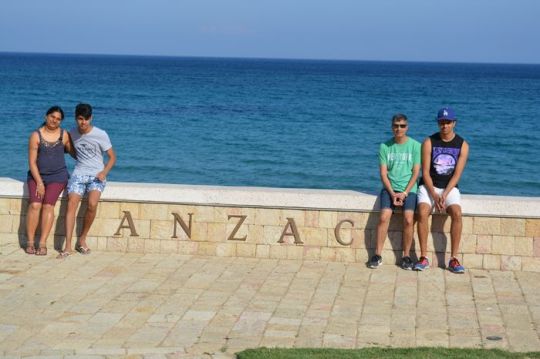
East Frontage
East Frontage.—The sculptures on this represent either a massacre or a battle; but, whether the former or the latter, the strife must be civil, as is evinced by both assailants and assailed being represented as Greeks; the former wear helmets i and breastplates, and carry bucklers, while the latter are clad in tunics open at the throat and breast. The central figures represent a warrior cutting the throat of a kneeling prisoner who is struggling to break his bonds; to the left of these is the figure of another warrior apparently coming to the assistance of the first; another of the figures is that of a man receiving on his buckler a spear- thrust from a kneeling warrior. The figure at the right-hand corner is missing; in the left corner is the figure of a dying warrior, with another bending over and supporting him.
West Front.—The sculptures on this represent a battle scene. The central figure is a Persian horseman, and the one on the left a Greek warrior, whose plumed helmet lies on the ground, and who is .defending himself against the mounted barbarian. To the right is a Persian attacking a kneeling Greek, who is covered with his buckler; to the left, and corresponding with the last-named figure, is that of a Persian archer kneeling. In the left comer is the figure of a slain Greek lying on his back, and in the right one a helmet and buckler.
Phoenician initial
Sarcophagi Nos. 77, 78, and 79.—These three sarcophagi, which were found near Alexander’s in the same tumulus, are also of Pentelic marble, and shaped to represent a Greek temple ; but, unlike the other sarcophagus, are without any sculptured ornamentation. All four are of the same marble, and were evidently ordered at one and the same time, and made in the same workshop. Sarcophagus No. 77 bears the Phoenician initial A, and No. 78 the initial Y. Prom the bones found in these three sarcophagi, they appear to have been used as a receptacle for the mortal remains of the wives, concubines, or other female connections of the person interred in the larger sarcophagus. All of them had been despoiled and had their lids broken when discovered, but the lids have been restored as far as possible. Their colouring has faded to a very great extent; the style and orna-mentation is uniform, but their sizes vary.
Sarcophagus of Tabnith, King of Sidon, No. 90.—This sarcophagus was also discovered at Saida by Hamdl Bey; it is anthropoid in shape, of black Egyptian stone, and in the Egyptian style. On its large short pedestal is graven a human bust, with smiling countenance, flat ears, high shoulders, a long beard, and long hair extending down both cheeks. The breast is carved to represent the embroidery on its garment, which terminates on either side in a falcon’s head, and has two large wings of the same bird below it. A border of hieroglyphics runs all round the upper portion of the trough, and on the lid are two more inscriptions, one in Egyptian hieroglyphics, and the other in Phoenician characters. From the former it appears that the sarcophagus originally contained the corpse of Panephtah, an Egyptian general, whose body was disinterred when the sarcophagus was sold to Tabnith, King of Sidon. The Phoenician inscription runs thus:—
0 notes